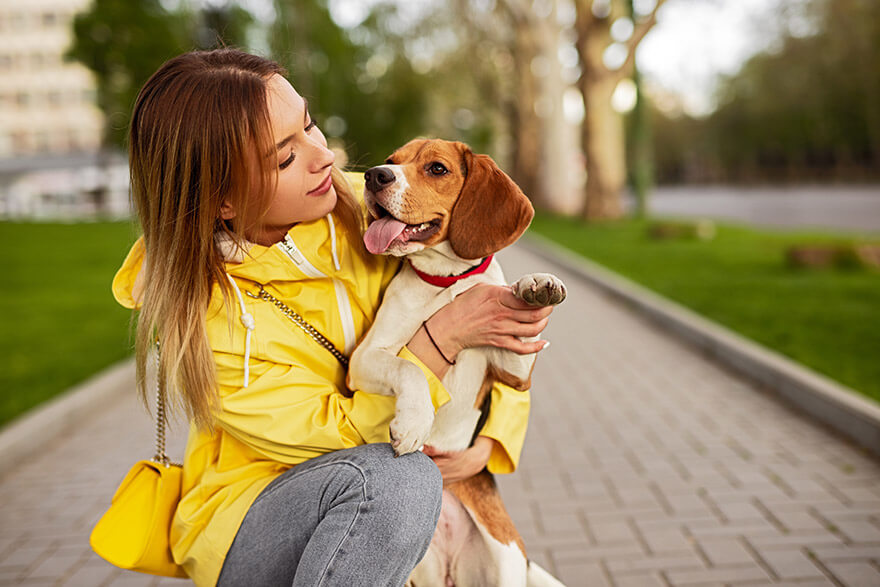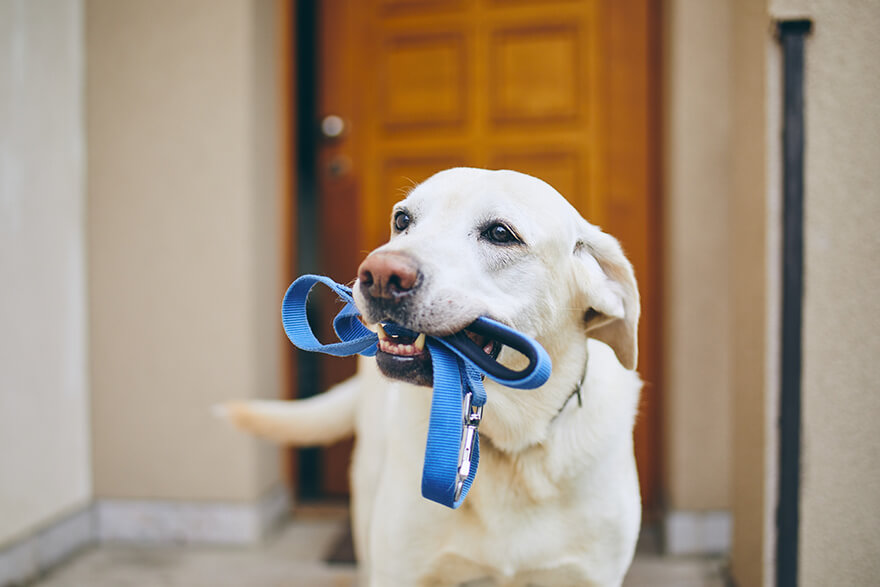

Why Is My Dog Limping?
It could be acute and sudden or gradually chronic, but in no way normal, and therefore, requires a thorough checking by a vet.

Writer Animalia Team
5 min read

You’ll recognize a limping dog by having one of their legs up in the air or by their abnormal walk. Limping might appear as a result of rough play, severe pain, gradual loss of function or simply ageing. It could be acute and sudden or gradually chronic, but in no way normal, and therefore, requires a thorough checking by a vet.
Gradual onset vs. sudden limping
A dog would limp either due to an injury or an ongoing illness. With the limp, your pup is trying to tell you that something ain’t right and that they experiencing some kind of discomfort. There is a main difference between an ongoing limping and a newly-appeared one. Knowing this fact can help your vet make a quick diagnosis of your dog’s condition.

Gradually-developed limping
As the term suggests, gradual limping develops over time, usually due to chronic or degenerative conditions. Osteoarthritis and dysplasia are the two most common reasons for gradual limping in senior dogs.
Sudden Limping
If your dog has never had an issue with limping and has just started with it now, it could be a sign of injury or trauma. These injuries could be caused by rough play, fights, or maybe even hit and runs.
What is causing my dog to limp?
Whether your dog’s limping is sudden or gradual, you need to know some of the main reasons behind it:
Wounds on limbs
These are especially common in puppies – stepping on a broken glass, getting pricked by a thorny bush or a pointy stick, could all lead to a dog limping. The foreign object might be stuck in their paw and they can’t step on it because it is too painful. These injuries could lead to infections, so it’s best to thoroughly examine the area. An insect bite or a bee can also cause limping. Watch for swelling and bruising and dial your vet. If your dog has something prickly stuck in their paw, they will excessively lick it.
Joint issues
Over the years, your dog’s joints will gradually get weaker due to excessive use, especially in their senior years. This could lead to limping and to diagnoses like hip dysplasia, elbow dysplasia, ligament disease, intervertebral disk disease, and patellar luxation. Infections due to tick bites, like Lyme disease, can also result in joint pain and limping.
Bone degradation
Bigger breeds are more prone to develop bone diseases at some point in their lives. Great Danes, especially puppies, can show signs of panosteitis (which makes walking unbearable for dogs) and osteodystrophy. These diseases need to be diagnosed early on, so your pup can live a cancer-risk-free life.
Exercise injury
Exercising can cause numerous accidents and injuries that can cause limping in dogs. If your dog runs out on the street mindlessly, they could get hit by a car. This might lead to broken bones, fractures on delicate areas, dislocations, or deadly spinal injuries. Dogs will always be dogs and they’ll find a way to dig out of your backyard, so make sure to keep your dog inside, especially during nighttime. A dog that refuses to put their entire weight on the limb is a key sign that your dog has suffered an injury.

When should I call the vet?
If the limping is not bothering your dog too much, it can usually wait a few hours. but in other cases, taking immediate action is crucial. Broken bones or dislocated joints require immediate care, and nerve damage can be a sign of a more serious neurological condition or spinal injury. If your dog shows any of the following signs, you should take them to emergency care immediately:
- Dangling limb (dislocation)
- Swelling
- Hot limb
- Obvious break or unnatural angle
What do I do If my dog Is limping?
If you have already noticed some limping, you should do the following steps:
- Get a closer look at the affected area (look for cuts, redness, bruising, bleeding, swelling, or warmth)
- Gently handle the limb and don’t apply too much pressure, which could lead to bites
- Search for foreign objects stuck in the limb
- Check to see if it’s a toenail issue
- Clean any wounds you find with disinfectant and lukewarm water
- Use tweezers for objects stuck in paws
- If your dog has a major injury, don’t play vet yourself and take your dog to a professional expert
- Do not try to move your dog all too much and let them rest
The treatment for your dog’s lameness will vary depending on the cause. Your dog’s treatment plan could be as simple as a few days of rest, or it could entail surgery, further testing, and a prolonged recovery. While this may sound intimidating, in most cases the sooner you get your dog in to see the veterinarian, the better the prognosis.
Consider getting your dog the best dog insurance! Get a quote from Animalia today to learn more.





We offer the most
comprehensive coverage
out there
car with a spare tire for life’s bumps.
Having Animalia is like a pimped-out
Rolls Royce with a swimming pool
in the trunk.



Get your pet insurance quote
Pet type
- Dog
- Cat
What is your pet's name?
Zip code





